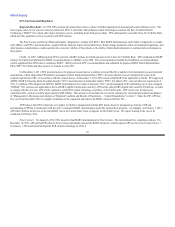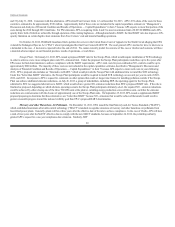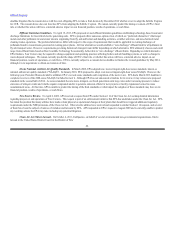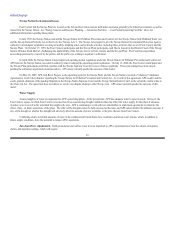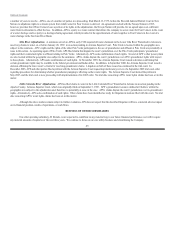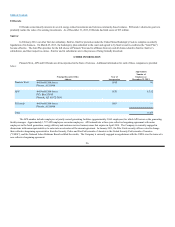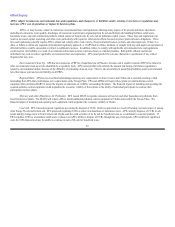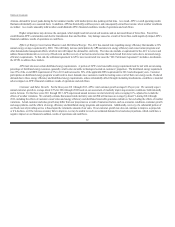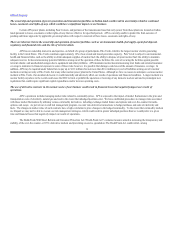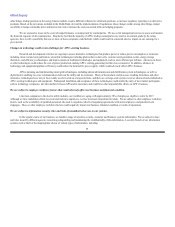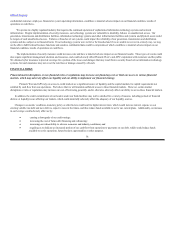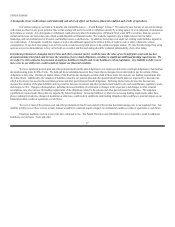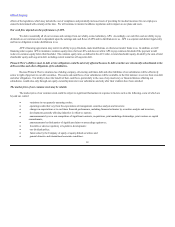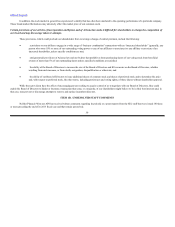APS 2013 Annual Report Download - page 32
Download and view the complete annual report
Please find page 32 of the 2013 APS annual report below. You can navigate through the pages in the report by either clicking on the pages listed below, or by using the keyword search tool below to find specific information within the annual report.
Table of Contents
APS is subject to numerous environmental laws and regulations, and changes in, or liabilities under, existing or new laws or regulations may
increase APS’s cost of operations or impact its business plans.
APS is, or may become, subject to numerous environmental laws and regulations affecting many aspects of its present and future operations,
including air emissions, water quality, discharges of wastewater and streams originating from fly ash and bottom ash handling facilities, solid waste,
hazardous waste, and coal combustion products, which consist of bottom ash, fly ash, and air pollution control wastes. These laws and regulations can
result in increased capital, operating, and other costs, particularly with regard to enforcement efforts focused on power plant emissions obligations. These
laws and regulations generally require APS to obtain and comply with a wide variety of environmental licenses, permits, and other approvals. If there is a
delay or failure to obtain any required environmental regulatory approval, or if APS fails to obtain, maintain, or comply with any such approval, operations at
affected facilities could be suspended or subject to additional expenses. In addition, failure to comply with applicable environmental laws and regulations
could result in civil liability as a result of government enforcement actions or private claims or criminal penalties. Both public officials and private
individuals may seek to enforce applicable environmental laws and regulations. APS cannot predict the outcome (financial or operational) of any related
litigation that may arise.
Environmental Clean Up. APS has been named as a PRP for a Superfund site in Phoenix, Arizona, and it could be named a PRP in the future for
other environmental clean-up at sites identified by a regulatory body. APS cannot predict with certainty the amount and timing of all future expenditures
related to environmental matters because of the difficulty of estimating clean-up costs. There is also uncertainty in quantifying liabilities under environmental
laws that impose joint and several liability on all PRPs.
Regional Haze. APS has received final rulemakings imposing new requirements on Four Corners and Cholla and is currently awaiting a final
rulemaking from EPA that could impose new requirements on the Navajo Plant. EPA and ADEQ will require these plants to install pollution control
equipment that constitutes BART to lessen the impacts of emissions on visibility surrounding the plants. The financial impact of installing and operating the
required pollution control equipment could jeopardize the economic viability of these plants or the ability of individual participants to continue their
participation in these plants.
Mercury and other Hazardous Air Pollutants. EPA issued MATS to regulate emissions of mercury and other hazardous air pollutants from
fossil-fired power plants. The MATS will require APS to install additional pollution control equipment at Cholla and possibly the Navajo Plant. The
financial impact of installing and operating such equipment could jeopardize the economic viability of Cholla.
Coal Ash. EPA released proposed regulations governing the disposal of CCRs, which are generated as a result of burning coal and consist of, among
other things, fly ash and bottom ash. EPA proposed regulating CCRs as either non-hazardous or hazardous waste. APS currently disposes of CCRs in ash
ponds and dry storage areas at Four Corners and Cholla, and also sells a portion of its fly ash for beneficial reuse as a constituent in concrete products. If
EPA regulates CCRs as a hazardous solid waste or phases out APS’s ability to dispose of CCRs through the use of ash ponds, APS could incur significant
costs for CCR disposal and may be unable to continue its sale of fly ash for beneficial reuse.
29


